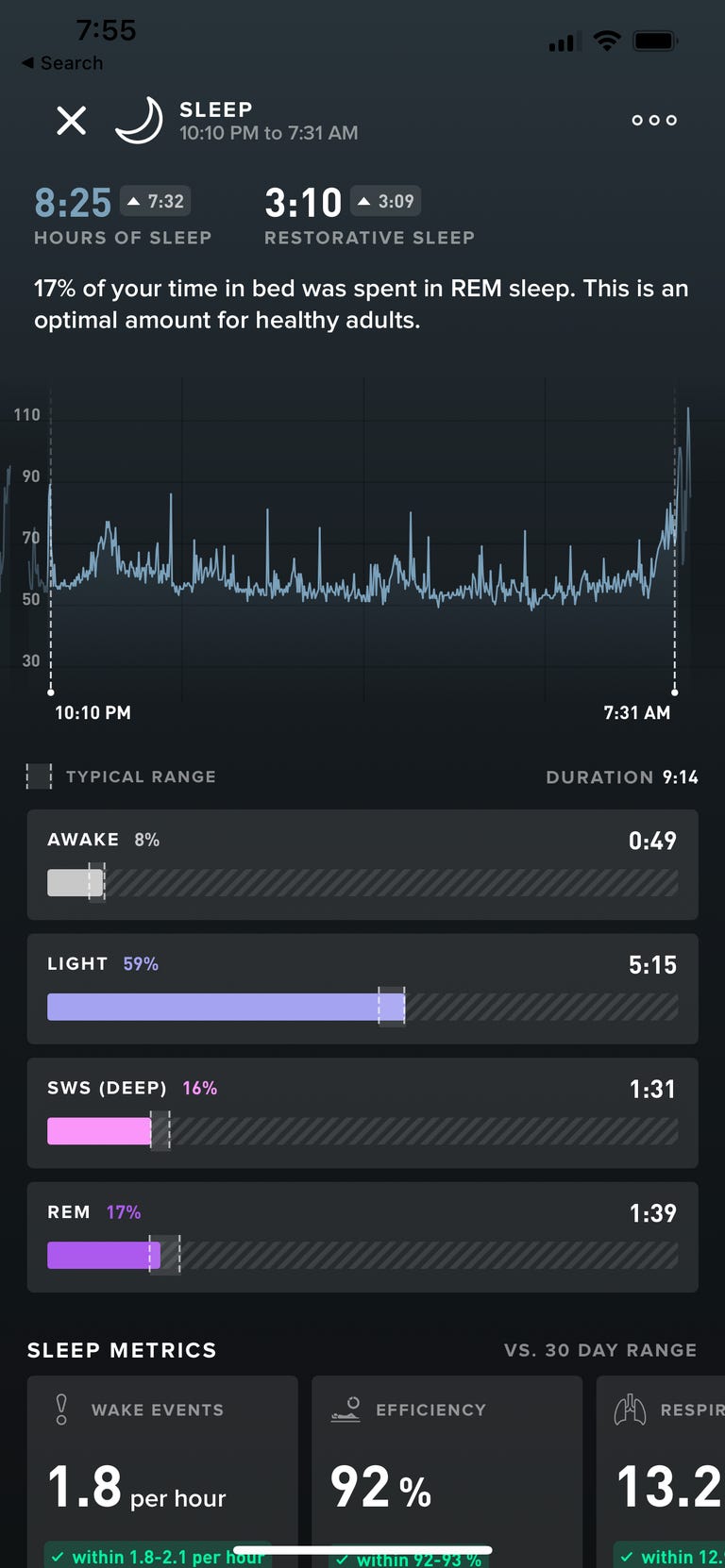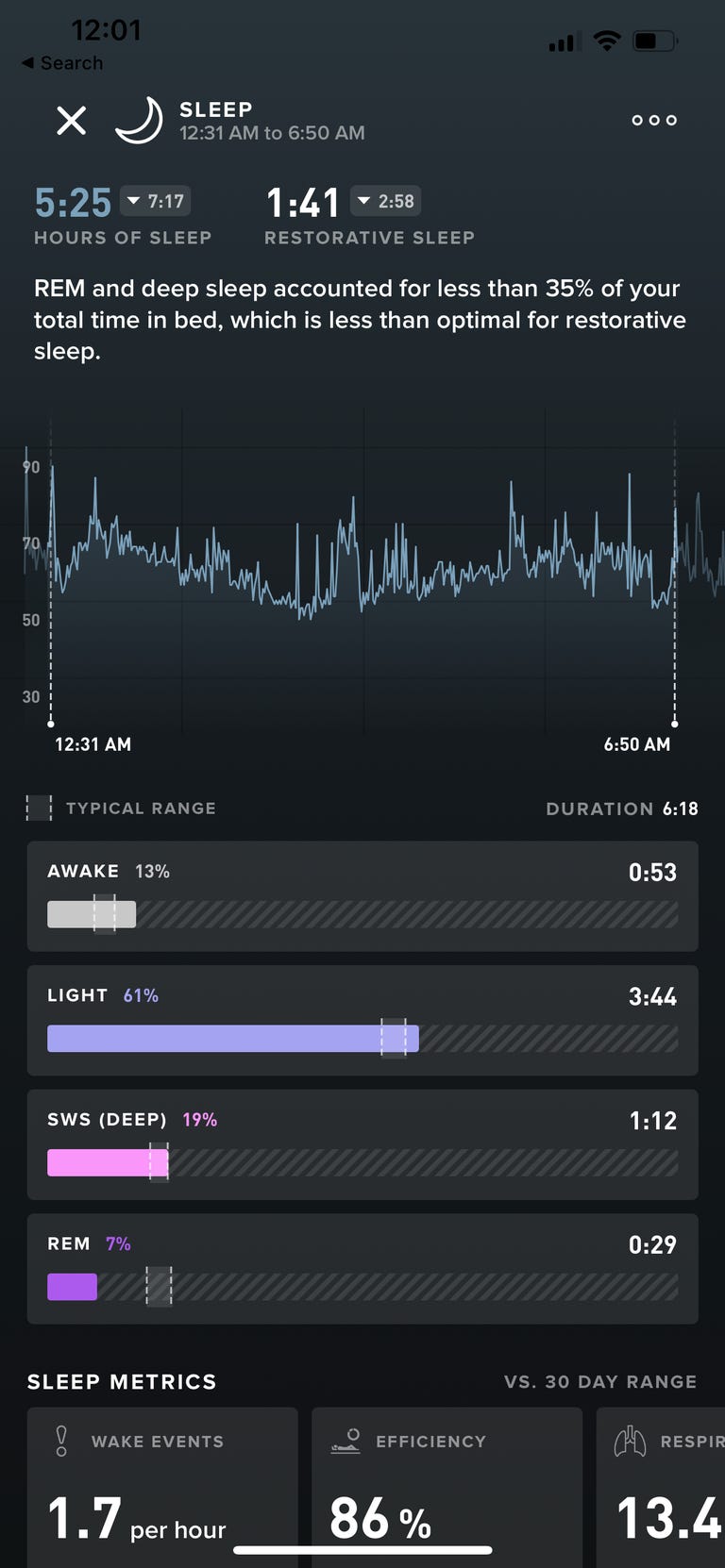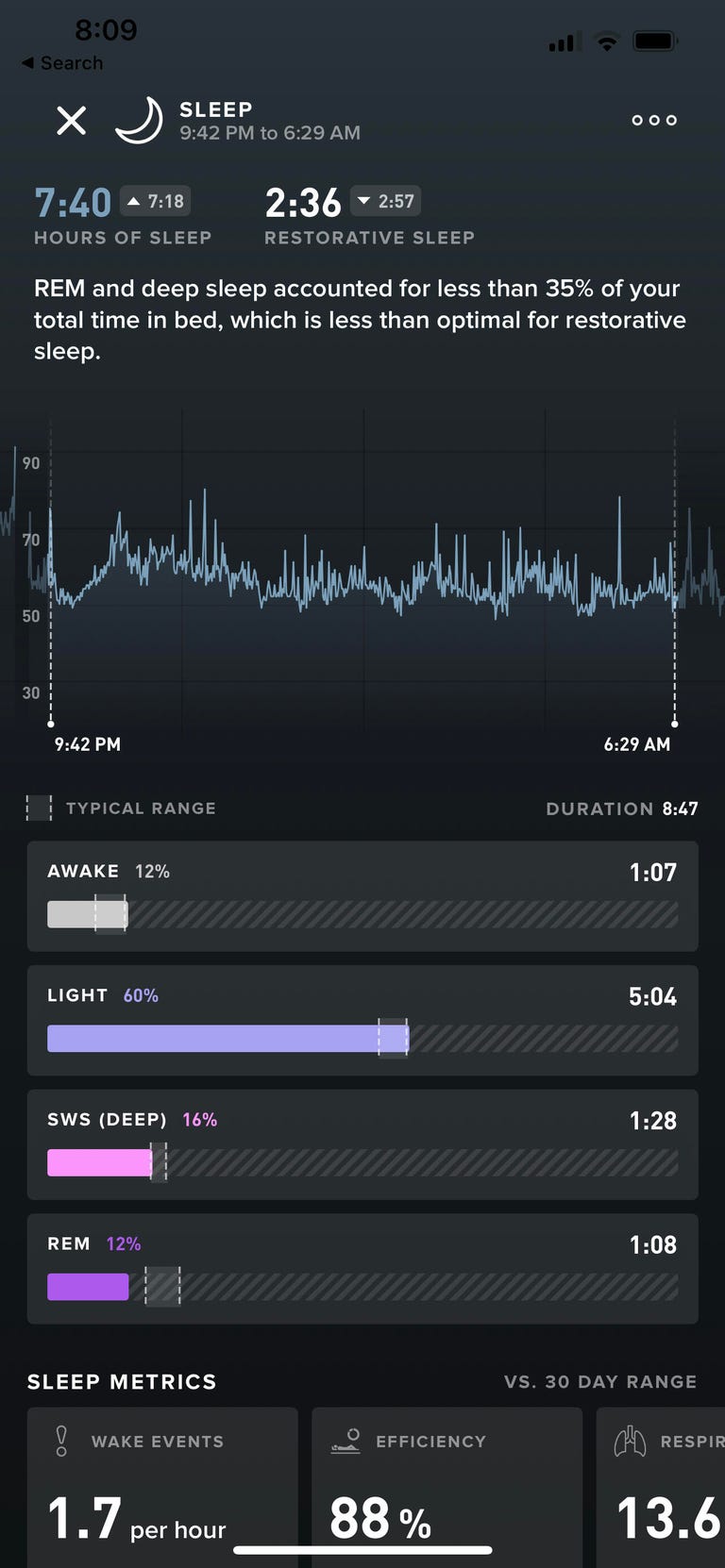Not getting enough sleep can have terrible impacts to your daily life.
If you’re like me, you’ve tried all the “hacks” to get better sleep: meditation, freezing pillowcases or using white noise machines.
Poor sleep affects all of us at some point, whether it’s caused by anxiety, an underlying health condition, dependence on our electronic devices or even the quality of our mattress. The consequences of sleep deprivation extend far beyond making us feel tired and moody the next day.
“We are familiar with the short-term consequences we feel each day, such as increased fatigue, poor mood and effects on performance,” said Dr. Sujay Kansagra, a sleep specialist and professor of pediatrics at Duke University School of Medicine. “But an increasing body of research shows long-term effects on cardiovascular health, immune function, risk of mood disorders, metabolism and even risk of stroke, just to name a few.”
At CNET, we’ve been studying sleep for a while, and I was curious to discover how advanced technology can be leveraged to help improve sleep quality. I went on a week-long journey into the realm of artificial intelligence to see if it could alter my sleep patterns. Here’s what I found.
Tracking my sleep performance with an AI-powered wearable
For this experiment, I started by using Whoop, an AI-powered fitness and health wearable, to track my sleep performance for a week. Similar to other fitness trackers, you wear it on your wrist and it monitors and analyzes all four sleep stages:
- Awake: The time before falling asleep and brief awakenings during sleep.
- Light sleep: Stage 2 of sleep, when you’re susceptible to being easily awakened by external factors.
- Deep sleep: Stage 3 of sleep, when your brain waves are the slowest and when your body does most of the recovering.
- Rapid-eye movement sleep: Also known as REM sleep, when your brain activity is similar to being awake, but your muscles don’t move. This is when your brain recovers and processes new information.
Restorative sleep is a combination of deep and REM sleep, so I was particularly interested in monitoring those two stages since they’re critical for physical recovery and cognitive function.

Overview of my Whoop sleep performance dashboard before experimenting with artificial intelligence to create a bedtime routine.
What sleep experts think about using AI for improving sleep
Wearable sleep trackers use a combination of indicators to measure your sleep performance, including heart rate, blood oxygen and motion sensors. Sleep quality can be hard to quantify, and this kind of technology can’t be relied on to determine a sleep disorder, according to Kansagara. “The software for determining deep versus light sleep in wearables is mostly black-box technology, so we don’t know what they are actually measuring,” she said.
That’s why sleep experts recommend seeking the help of specialized professionals to accurately diagnose and treat health conditions, such as sleep apnea or insomnia, through supervised sleep studies. Although sleep tracking will never be an actual cure for poor sleep, it can provide useful data on your overall sleep hygiene as well as give you insights on how to improve sleep quality.
It’s also important to note that sleep scores on wearables mostly rely on averages, and many factors affect the quality of sleep day to day, such as stress levels, location familiarity, exercise routine, diet and alcohol consumption. For example, I tend to sleep poorly when I’ve had a stressful day or I have too many things I need to get done.
Following a weekly sleep routine created by ChatGPT
To put the use of automated technology to the test, I used ChatGPT to create an ideal bedtime routine, which I would follow for an entire week while using Whoop. I could then compare those measurable sleep results with the “normal” ones from the week prior, without the robot.
Since I don’t have any underlying conditions that impact my sleep or an extremely strenuous daily routine, I started with a generic prompt: “Create a week-long bedtime routine to combat poor sleep.”
I tried playing around with different prompts, giving it specifics like having severe anxiety and insomnia, but the results came back the same. This could be because ChatGPT produces responses based on the data it’s been designed to pull from published internet content, meaning that it’s not customizable. Regardless of the reason behind poor sleep, you’re likely to get common or generalized suggestions that you’d find from other sources.
Here’s the breakdown of my bedtime routine for an entire week following ChatGPT’s daily recommendations. Each routine came with a few specific instructions.
Day 1: Establish a relaxing evening environment
- Set a consistent bedtime that allows for 7 to 9 hours of sleep.
- Dim the lights in your bedroom to create a calm atmosphere.
- Turn off electronic devices at least 30 minutes before bed.
- Engage in a calming activity such as reading a book or taking a warm bath.
My goal was to wake up at 6:30 a.m. every day, so I aimed to be in bed by 9 p.m., read for 30 minutes and call it a night. I turned off all electronic devices while I read, leaving my phone out of the bedroom to avoid distraction and dimming the lights.
I didn’t even get to read for 20 minutes before my eyes started to close and I got sleepy. Reading before dozing off is a game changer for sleep latency (the amount of time it takes you to fall asleep).
According to The Sleep Doctor team, engaging in a relaxing activity like reading can help signal to your brain that your body is relaxed and ready to sleep. I usually spend 40 minutes scrolling through TikTok before I start getting sleepy. Studies show that excessive screen time before bed can severely disrupt our melatonin production, making it more difficult to “turn off” our brains and fall asleep. Reading cut my sleep latency by half on the first night.
The next morning
I got a full 8 hours and 17 minutes of sleep. I even woke up before my alarm went off (which is rare) and felt energetic. The biggest change was in my sleep data: I spent more time in restorative sleep, which is the rest my body needs to replenish itself. For example, the night before during my prior routine, my total time spent in REM and deep sleep was 36%. After following this sleep routine, that number jumped to 41%.


Sleep performance after Day 2 of the experiment.
Day 3: Create a sleep-inducing environment
To follow the recommendations, I set my air conditioning to 68 degrees Fahrenheit and used breathable linen bedding, earplugs and an eye mask. Going overboard with gear impeded me from getting the best restful sleep. I woke up several times during the night because my earplugs kept falling out and my eye mask put too much pressure on my eyes. I recommend investing in good earplugs and a high-quality eye mask to avoid those issues.
Read more: How to Create the Perfect Environment for Better Sleep
The next morning
Unlike the previous nights, I didn’t get the best rest with these recommendations. I had more wake events and less restorative sleep (a full 30 minutes less) and felt it the next morning (grogginess and fatigue). My lack of sleep had less to do with the recommendations from ChatGPT than my selection of earplugs and eye masks.

Sleep performance after Day 4 of the experiment.
Day 5: Incorporate physical activity
- Engage in regular exercise earlier in the day, preferably at least a few hours before bedtime.
- Avoid intense exercise close to bedtime, as it may make it harder to fall asleep.

Sleep performance after Day 5 of the experiment.
Day 6: Avoid late-night eating and drinking
- Finish your dinner at least 2 to 3 hours before bedtime.
- Avoid greasy or spicy meals close to bedtime, as they can cause discomfort and disrupt sleep.
- Limit fluid intake before bed to avoid disruptive trips to the bathroom during the night.

Sleep performance after Day 6 of the experiment.
Day 7: Wind down with a relaxing bedtime routine
- Start your routine 30 to 60 minutes before your desired bedtime.
- Engage in a relaxing activity like gentle stretching, listening to calming music or journaling.
- Create a cozy atmosphere in your bedroom by dimming the lights and keeping distractions to a minimum.
- Practice good sleep hygiene by maintaining a consistent sleep schedule.
The recommendations for the last night were similar to the first. Out of all of the routines, this one worked best for me, so I was excited to try it out again. Thirty minutes before going to bed, I turned off all electronics, dimmed the lights in my room and read my book. Again, I didn’t hit the 30-minute mark before my eyes started to close.
The next morning
Like after the first night, I woke up well-rested and energized. I got 8 hours of sleep and 2 hours and 34 minutes of restorative sleep. I spent 27% of my time in deep and REM sleep, but when I look at the breakdown, I spent less time in deep sleep and more time in REM sleep than the night before. I also had significantly more wake events during the night.

Average daily sleep performance for the week of the experiment.
Would I recommend you use AI to get better sleep?
The short answer is, yes (to an extent). By leveraging the data provided by Whoop, I gained valuable insights into my sleep patterns and found which sleep routine works best for me.
ChatGPT can help you improve your sleep quality by helping you explore different routines and find the one that best suits you. Keep in mind that ChatGPT’s automated technology spots patterns found in oceans of data from the internet and other sources, so what it recommends might not be too different from what you can find with a Google search.
Artificial intelligence will continue to evolve. I see a future where AI will become sophisticated enough to give even more personalized recommendations that help us better optimize our sleep — hopefully leading to a more rested and happier world.
Editors’ note: CNET is using an AI engine to help create some stories. For more, see this post.


